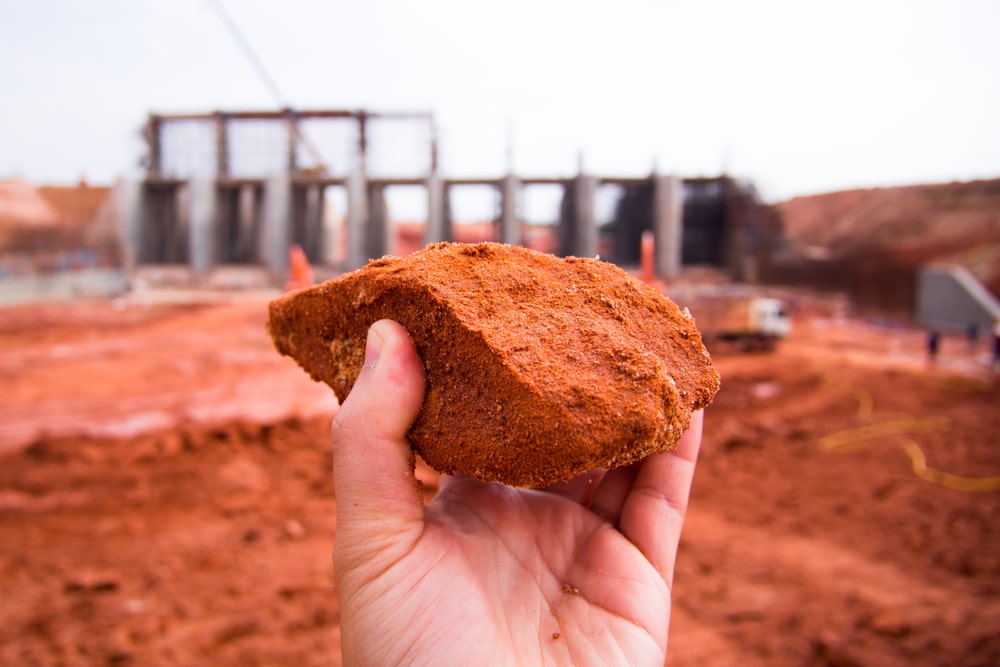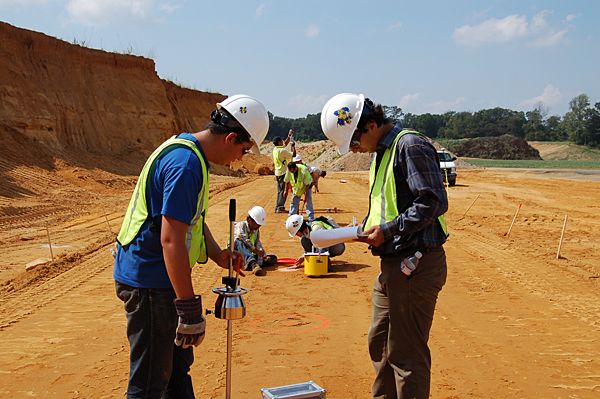Consulting Civil Engineering Companies Giving Geotechnical Solutions
Wiki Article
Just How Consulting Engineers Enhance Geotechnical Engineering Projects: Insights Into Their Competence, Methodologies, and Collaborative Approaches
Consulting engineers are essential in improving geotechnical design tasks, applying their specialized understanding to navigate the intricacies of subsurface conditions. Their collaborative strategies foster communication amongst varied project stakeholders, eventually forming the project's trajectory.Duty of Consulting Engineers
The expertise of speaking with engineers in geotechnical engineering is basic to the effective execution of building jobs. These professionals play an essential function in assessing dirt and rock properties, which are essential elements affecting design and building choices. By conducting thorough site investigations, consulting engineers collect necessary information that educates the design procedure, making sure tasks are improved secure and ideal ground.Consulting designers additionally give vital insights right into risk administration (geotechnical geologist). They determine potential geotechnical threats, such as landslides, soil liquefaction, and negotiation concerns, making it possible for stakeholders to carry out reliable mitigation methods. Their competence aids in optimizing foundation layouts, which can result in considerable expense financial savings and enhanced safety and security
Moreover, speaking with engineers act as an essential web link between task owners, architects, and professionals. Their capability to equate intricate geotechnical information into workable recommendations cultivates cooperation and facilitates educated decision-making throughout the task lifecycle. This multidisciplinary strategy not just boosts task effectiveness yet likewise makes certain conformity with regulative standards and finest techniques.
Secret Approaches in Geotechnical Design

One primary approach is site examination, which involves conducting area examinations and laboratory analyses to gather information on subsurface conditions. Techniques such as Criterion Infiltration Screening (SPT) and Cone Penetration Screening (CPT) are commonly made use of to assess dirt stratigraphy and strength. In addition, geophysical approaches, including seismic and electric resistivity studies, provide non-invasive methods to evaluate subsurface qualities.
Another critical approach is mathematical modeling, which makes it possible for designers to imitate numerous circumstances and predict just how soil-structure interactions will behave under various loading conditions. Limited Aspect Analysis (FEA) is a common approach used in this context.
Moreover, the design of foundations, preserving structures, and earthworks relies greatly on these methodologies - geotechnical geologist. By integrating innovative analytical tools with field information, consulting engineers can create tailored services that deal with particular job difficulties, inevitably contributing to the security and safety and security of building and construction tasks
Importance of Dirt Evaluation
Soil analysis works as a fundamental element in geotechnical engineering, providing crucial insights into the physical and chemical residential properties of dirt necessary for effective building and construction preparation. Understanding soil characteristics is critical for identifying its load-bearing capacity, drain habits, and possibility for negotiation or instability. In-depth soil examinations, including sampling and lab testing, assistance determine criteria such as soil type, dampness web content, density, and shear toughness.
These analyses inform the option of suitable construction techniques and products, inevitably affecting project security and long life. As an example, natural dirts may require various structure designs contrasted to granular dirts, requiring customized engineering solutions. Additionally, dirt analysis aids in determining contaminants that could present threats to human health and wellness or the atmosphere, permitting the growth of mitigation strategies.
Including dirt analysis into the beginning of job development helps to reduce unanticipated difficulties, making certain that engineers can expect and deal with possible problems prior to they intensify. By establishing a detailed understanding of the website problems, consulting designers can optimize style effectiveness and reduce costs, therefore enhancing the total success Look At This of geotechnical engineering projects.
Collective Methods in Tasks
Effective geotechnical jobs frequently pivot on joint techniques that unite diverse experience from different techniques. Reliable partnership among getting in touch with engineers, rock hounds, environmental researchers, and construction professionals is essential for attending to intricate obstacles and optimizing job results. By leveraging the unique skills and knowledge of each staff member, jobs can gain from an alternative understanding of the site problems, governing needs, and engineering restraints.Normal communication and interdisciplinary conferences help with the sharing of insights and foster a society of team effort. These collective efforts allow the identification of potential threats early in the task lifecycle, permitting prompt reduction methods. Moreover, including comments from stakeholders, including regional neighborhoods and regulative companies, ensures that all viewpoints are taken into consideration, boosting job approval and compliance.
Additionally, the combination of sophisticated modern official site technologies, such as Geographic Details Solution (GIS) and Building Info Modeling (BIM), additional improves partnership. These tools permit the real-time sharing of information and visualization of geotechnical problems, advertising educated decision-making. Ultimately, a collaborative technique not only improves project execution but also lays the structure for innovative options to intricate geotechnical design challenges.
Influence On Task Outcomes

Consulting designers utilize sophisticated techniques such as danger assessment and predictive modeling, which enhance the accuracy of job projections. Their ability to incorporate ingenious technologies, like geotechnical instrumentation and data analytics, further fine-tunes the style and construction processes. Consequently, jobs experience enhanced performance, lowered prices, and lessened delays.
Moreover, promoting reliable interaction and partnership amongst employee enhances problem-solving capabilities. When obstacles occur, a joined front permits swift recognition of services, avoiding prospective setbacks. Inevitably, the collaborative efforts of consulting engineers contribute to better results, ensuring that projects fulfill both governing criteria and customer assumptions.
Verdict

Report this wiki page